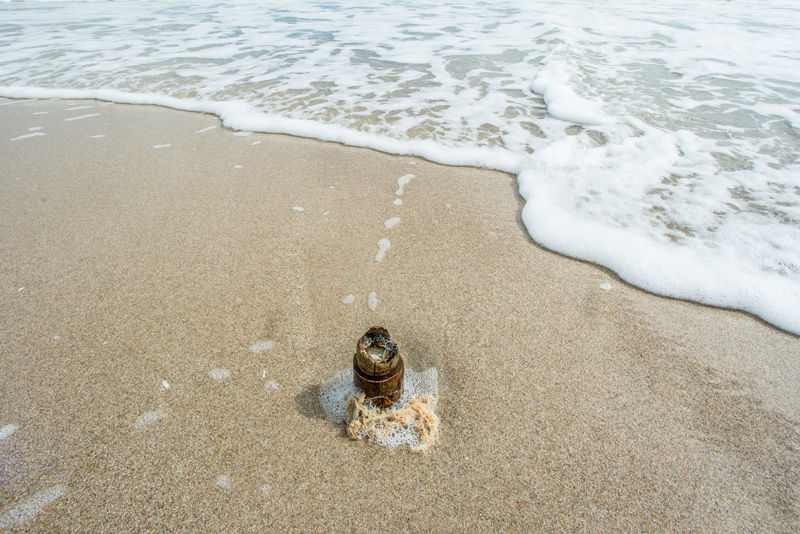Seasonal erosion unearthed jagged pipes and several sharp, rusty metal hazards at low tide last week on the Tracking Station beach in front of the Florida Tech Marine Lab.
Until they are removed, the spikes and jagged pipes – which are concealed beneath the waves except at low tide – pose a risk of serious injury to anyone wading or running into the surf in that area.
The exposed metal was first noticed by a Vero Beach 32963 reader last Wednesday, who took photos and alerted our newsroom to the hazards sticking up out of the sand.
On Thursday the jagged metal was hidden in the surf and sand, only to re-emerge on Friday at low tide. The fact that the metal disappears beneath the water each day makes it all the more sinister. At high tide, a beachgoer could easily step or fall onto one of the rusty spikes without ever seeing it. The spikes are long enough to go completely through a person’s foot.
Periodic visibility also makes it more difficult to mark or cordon off the dangerous objects.
The hazards are located about six feet east and about three feet south of a PVC pipe system that is typically visible at low tide.
County Coastal Engineer James Gray, when alerted to the problem on Friday, contacted FIT to see if Marine Lab personnel could shed light on the objects.
“I conferred with FIT,” Gray wrote in an email. “The PVC pipe and rusted metal well point belongs to them. They are aware and will be addressing it prior to the March 1 sea turtle nesting deadline. Thanks again for bringing this to our attention.”
The metal would be just as hazardous to turtles trying to nest on the beach as to a child’s hand, foot or body. Sea turtles are protected by state and federal law, so it is possible the metal objects are a violation of conservation statutes as well as a risk to beachgoers.
Greg Tsark, Florida Tech’s vice president of facilities operation, said the pipes, once were used to intake sea water, are from “before our time here,” permitted and installed prior to 1980.
Because the structures are below the high tide line, they would have required permits from the Florida Department of Environmental Protection and the Army Corps of Engineers, according to Gray. He added that FIT is responsible for the structures even though they did not install them.
Tsark said the hazards were scheduled to be removed this week. “What we’re going to do, rather than bring any heavy equipment down there, is to go down and dig them out by hand as far down as we can and cut it off as far down as we can and cap it off.”
University spokesman Wes Sumner said Monday FIT would assess the situation prior to removal to see if something can be done to keep people away from the hazards. “The public’s safety has to be the number one priority,” Sumner said.

